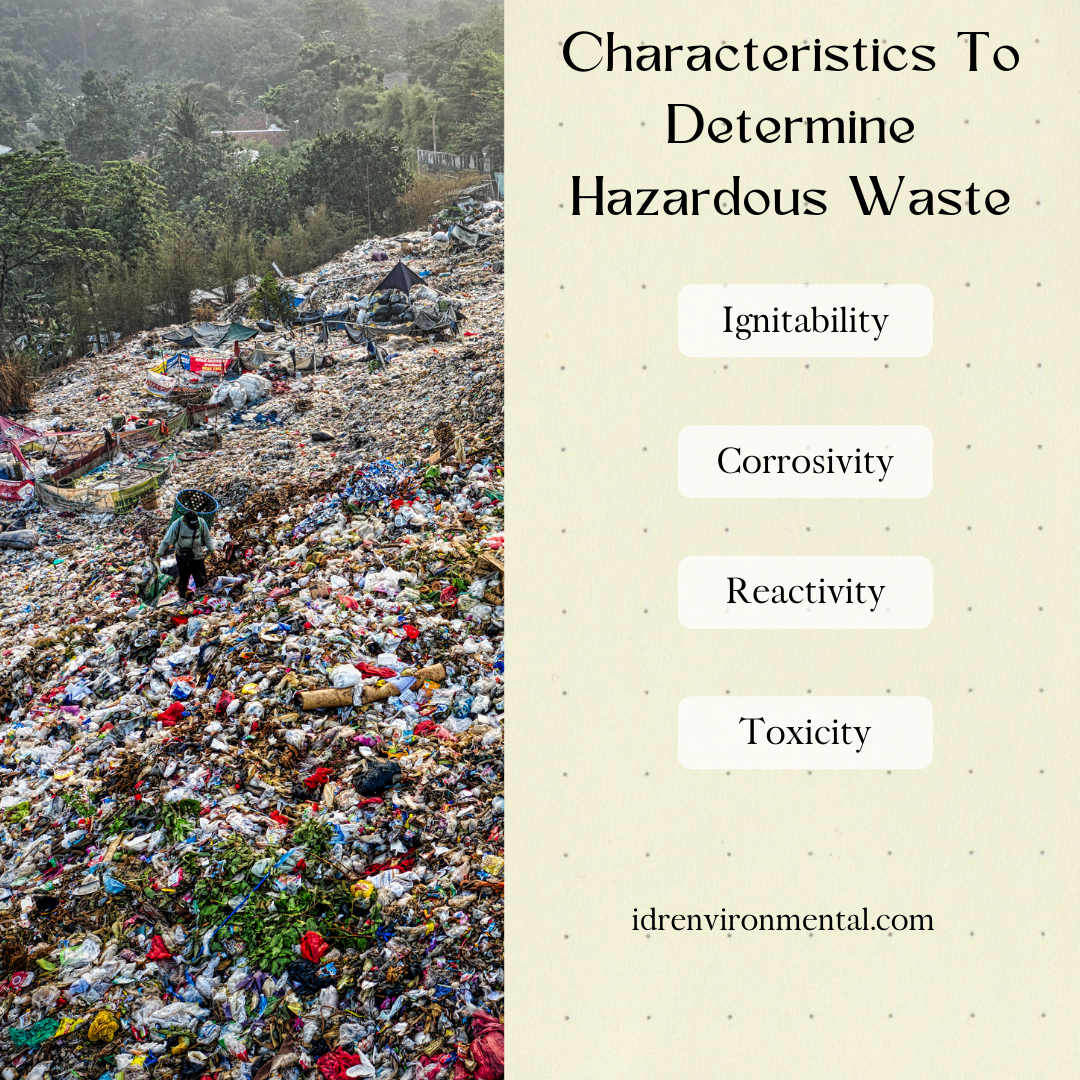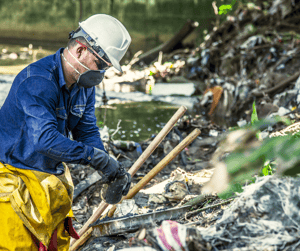Waste can be hazardous yet not fall under the same federal RCRA guidelines for disposal. Or, your waste could be non-RCRA hazardous yet fall under more strict hazardous waste state laws.
Confused?
Hazardous and non-hazardous waste management is anything but straightforward. Complicating matters are different state laws, some of which are more rigid than federal laws and ever-changing regulations.
Hazardous Vs. Non-Hazardous Waste
Hazardous waste is potentially harmful to people or the environment. Non-hazardous waste isn’t. Simple, right?
Not so fast. Many factors go into whether a substance or chemical is deemed hazardous vs. non-hazardous, including its identification, quantity and where it’s located.
For example, under federal law, one of the only types of electronic waste that is regulated is the disposal of cathode ray tubes (CRTs). These are typically found in televisions and computer monitors. CRTs are considered to be hazardous because of what’s inside them … lead, cadmium and barium.
However, if your business is in California, you face much more strict regulations regarding e-waste disposal. Common items like cell phones, radios, computer monitors and circuit boards must be properly disposed of, or your company could face steep hazardous waste fines.
While it can be difficult to distinguish what waste is hazardous and non hazardous, the U.S. Environmental Protection Agency offers four characteristics that can be used as a starting point to determine whether it is hazardous:

- Ignitability: Ignitable wastes can readily catch fire or spontaneously combust if exposed to the right conditions.
- Corrosivity: Corrosive wastes are acidic or alkaline and can easily corrode human skin, metal and several other types of materials.
- Reactivity: Reactive wastes can produce an explosion or release of toxic fumes, gases or vapors if exposed to unstable conditions.
- Toxicity: Toxic wastes are harmful or fatal when absorbed or ingested. The EPA developed this characteristic to identify wastes that are likely to leach concentrations of toxic chemicals into groundwater.
Examples of hazardous waste include battery sulfuric acid, mercury, lead, PCBs, and many types of cleaners, oils and used solvents.
Types of non-hazardous waste include different types of industrial waste like grinding dusts, ash and sludges, as well as different types of medical waste like plastic packaging, paper, cardboard, office products and aerosol cans that are completely depleted.
Whether a substance is hazardous or non-hazardous significantly impacts its disposal.
Hazardous Vs. Non-Hazardous Waste Management
Having a waste management plan in place that addresses hazardous and non-hazardous waste disposal is critical to keeping your business in compliance.
hazardous and non-hazardous waste disposal is critical to keeping your business in compliance.
A registered hazardous waste transporter must dispose of any hazardous waste you generate if your company is in California. However, any waste transporter can dispose of the non-hazardous waste your company generates.
If you ONLY generate non-hazardous waste, you can also opt to take your waste to a Treatment, Storage and Disposal Facility (TSDF) or the landfill yourself rather than partner with a waste transporter. However, you must first check to ensure the facility accepts the type of waste you have and the amount of waste you are disposing of.
If you generate large amounts of waste, this can serve as a significant roadblock in either transporting the waste yourself or disposing of it in a trash receptacle on your property.
Even if you only generate non-hazardous waste, there are several benefits to using a transporter that is experienced in handling both types of waste. An experienced waste transporter can:
- Separate hazardous waste from non-hazardous waste: At times, a piece of waste can have both hazardous and non-hazardous components … something that can be the case with electronics. It can be difficult to separate these components. However, a hazardous waste company can ensure the entire devices are properly disposed of.
- Take care of complex cases: Although 85% of medical waste is non-hazardous, it can take one small change to make it hazardous. For example, while one container may be nontoxic, that same container in another capacity with certain residues present can make it toxic.
- Handle bulk loads: Many certified waste disposal companies have experience disposing of both small amounts and large amounts of waste. If your facility receives a constant flow of shipments, you may have large quantities of trash, such as cardboard boxes, that need disposed of.
- Re-classify your waste and save you money: While you may think you have hazardous waste on-site, it may qualify under the excluded recyclable materials exception. An experienced hazardous waste transportation company can review your waste streams and determine if any of them can be classified as non-hazardous. This can literally save you thousands of dollars in disposal fees.
- Understand the law: Even when a type of waste is considered hazardous, its quantity may exclude it from hazardous waste laws. In California, asbestos is hazardous. However, only asbestos waste weighing more than 50 pounds in total requires transportation by a certified hazardous waste disposal company.
Finally, the best waste management companies will offer a hazardous waste walk-through program. This type of program assists your company with developing site-specific plans that include training and emergency preparation.
Consultative in nature, a walk-through program also evaluates areas like waste storage, manifest preparation, pick-up scheduling and development of a plan to transport your hazardous or non-hazardous waste to recycling and disposal sites.
A Solution For Ongoing Management
Managing your waste is more than classifying it as hazardous or non-hazardous. There are several factors that go into determining what the best plan is for disposal.
An experienced waste disposal company with experience in BOTH hazardous and non-hazardous waste management can help to ensure you’re meeting all regulations so that you can focus on running your business.

Comment